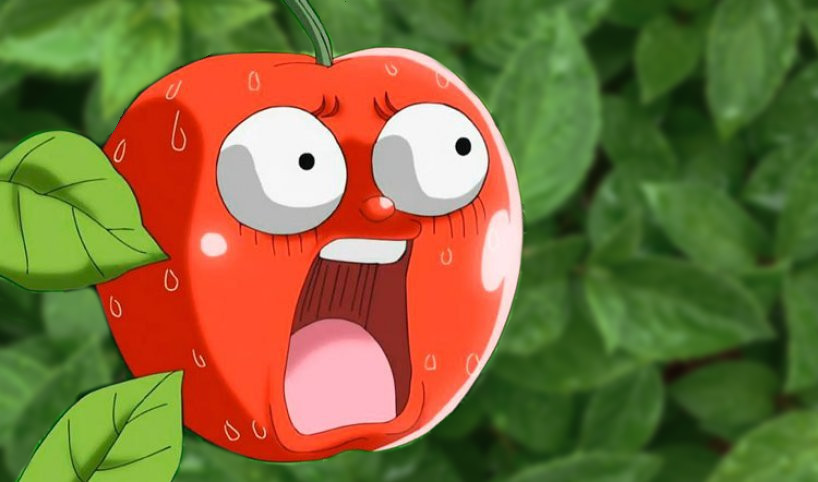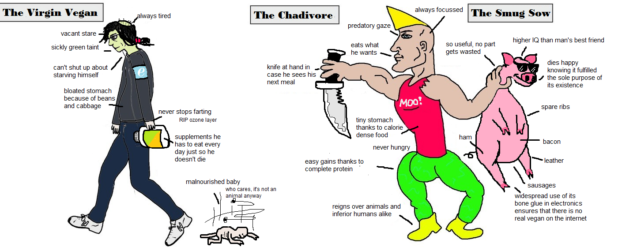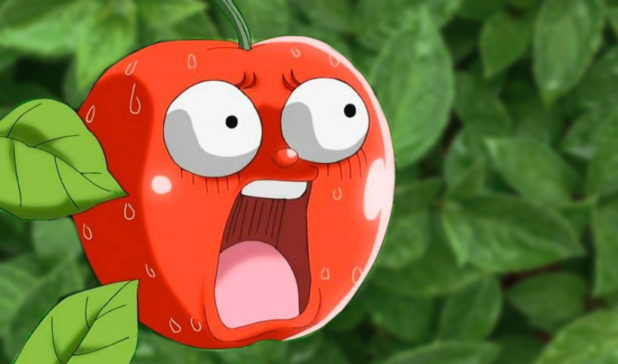Adrian Sol
Daily Stormer
September 17, 2018
This is the reaction to a leaf injury.
Some vegetarians adopt their diets for health reasons, or simply because they don’t like meat. That’s foolish, but whatever.
On the other hand, vegetarians and vegans who think their dietary choice is more “moral” or “ethical” really piss me off.
Because these people will read articles like this without so much as a pause and just continue to feel completely righteous.
Be a chad. Kill plants and animals alike.
We tend to think of plants as helpless, passive green blobs, but a fascinating new study, in which scientists used fluorescent light to visualize alarm signals within plants, shows how our photosynthesizing friends are able to mobilize their defenses.
New research published today in Science is providing an unprecedented view of the signaling action that happens within plants when they’re under attack. A second or two after a plant receives an injury, like a chomp from a caterpillar, a warning signal radiates from the location of the wound, spreading out through the entire plant in a process that takes fewer than 120 seconds. The plant, now aware that it’s under attack—or at least, as “aware” as a plant can be—can respond to the threat by releasing chemical countermeasures.
Scientists have known about this systemwide signaling system for quite some time, but the new study, conducted by researchers from the University of Wisconsin-Madison, the Japan Science and Technology Agency, and several other institutions, is the first to show this remarkable defense mechanism in action. What’s more, the study offers new insights into the biological processes behind this nervous-system like signaling, which is still poorly understood.
So basically, when plants get injured, a signal gets generated that travels throughout its body through the circulatory system, which acts basically like a slow-motion nervous system.
“We do know that if you wound a leaf, you get an electrical charge, and you get a propagation that moves across the plant,” botanist Simon Gilroy, a professor at UWM and a co-author of the new study, said in a statement. “What triggered that electric charge, and how it moved throughout the plant, were unknown.”
Gilroy and his colleague Masatsugu Toyota, who led the research, suspected calcium had something to do with it. Calcium ions, which produce an electrical charge, are known to perform signaling duties in plants, particularly in response to changing environmental conditions. Scientists have struggled to visualize this movement within plants, leading to a rather fascinating solution. To watch the calcium move in real time, Toyota and his colleagues bioengineered plants to produce a protein that fluoresces around calcium, lighting up the interiors of plants like a Christmas tree. Using advanced microscopes and biosensors, the researchers were able to track the presence and volume of the calcium in response to various injuries, including caterpillar chomps, scissor snips, and damage caused by crushing.
Plants know pain – but do they know fear?
While experimenting on mustard plants, the researchers watched the plants light up as the calcium surged away from the injury and toward their other leaves. The signal propagated at a rate of one millimeter per second, which is fast enough to reach the far corners of the plant in less than two minutes. The calcium pulses were able to spread by traveling through the plant’s vascular, or circulatory, system.
After the warning signal had fully propagated, the leaves began to release their defense-related hormones in preparation for future attacks. Plants, in addition to releasing chemicals that kickstart the repair process, can release noxious, insect-unfriendly chemicals.
This is all very interesting.
Ultimately, the process is very similar to what happens when an animal or human gets injured. A signal is sent warning the creature of the injury, which triggers the release of various hormones to help the creature deal with the threat.
So if the process is totally analogous, why should we assume that the subjective experience is totally different? In other words, why should we assume that plants don’t feel pain when injured?
Plants are more dynamic and intelligent than most people think.
https://www.youtube.com/watch?v=Q-4w5xYLwiU
They communicate with each other, adapt to their environments, have family relationships, have memories, and more.
They can sense light, sound, touch and are sensitive to various chemicals. In other words, they have sensory perceptions.
So there’s no real reason to assume that they wouldn’t have some kind of consciousness.
Lol plants are racist – they’re smarter than shitlibs.
My point here is that vegans and vegetarians don’t care about the suffering of plants, because they don’t perceive it.
This is the exact same ethical process that leads to liberalism. Liberalism is about reducing obvious suffering, while ignoring subtle suffering that the liberal can’t understand.
The liberal will want to send food to Africa to alleviate the starving Blacks, without caring that this will lead to much greater suffering in the future, due to overpopulation and ecological collapse.
The reality is that all our choices result in suffering and destruction. Real morality is all about accepting that, and consciously deciding who or what will be sacrificed.
But fools instead try to make decisions where the “suffering” occurs outside of their awareness, so that they don’t “feel bad about it.” But since they systematically make decisions based on their own ignorance, the results are usually much worse.
When it comes to diet, everything we eat is going to be body parts of beings who are alive and conscious to some extent or another. There is no “harmless” hippie diet, unless you eat only fruits and nuts, in which case the one being harmed is yourself and your line of descent.
We’re all part of the cycle of life, and the dynamics of this world, which involve constant suffering and death. Accepting that and moving on is part of becoming an adult.


